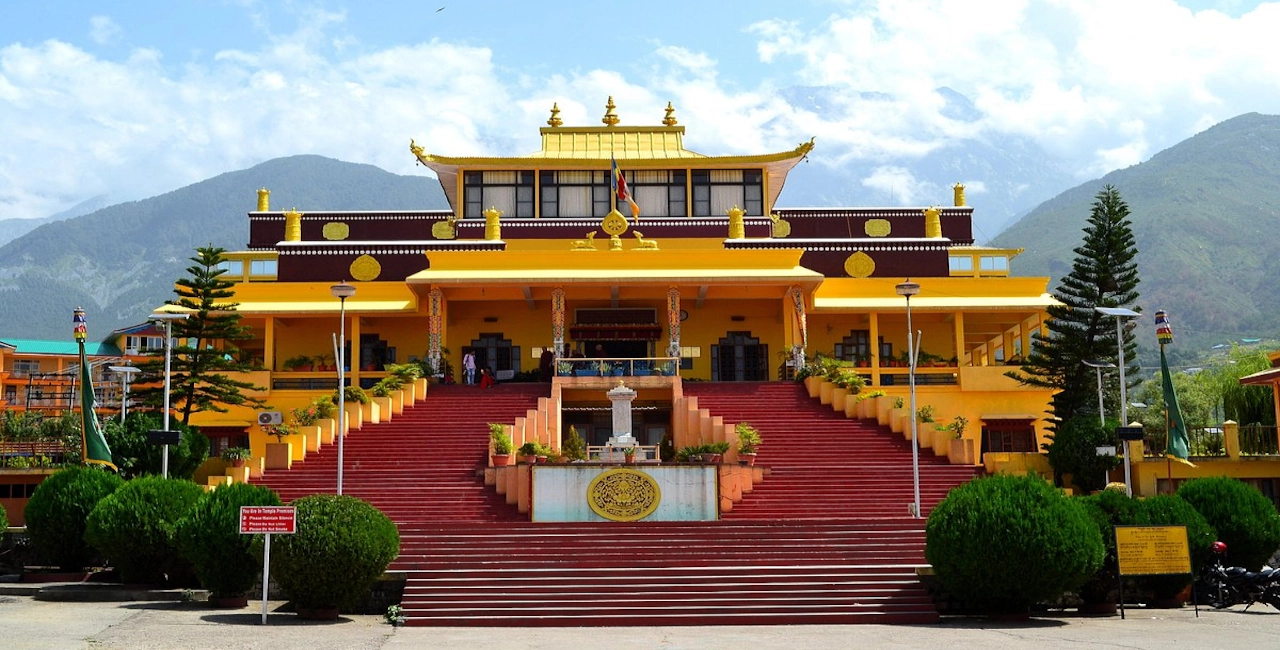Nestled in the foothills of the Dhauladhar range of the Himalayas, Dharamshala is a picturesque town in the Kangra district of Himachal Pradesh, India. Renowned for its breathtaking landscapes, spiritual ambiance, and rich cultural heritage, Dharamshala has become a prominent destination for tourists, trekkers, and spiritual seekers alike. It serves as the official residence of the 14th Dalai Lama and the Tibetan government-in-exile, making it a center of Tibetan Buddhism in India. With its serene monasteries, vibrant markets, and stunning natural beauty, Dharamshala offers an unparalleled experience for those seeking tranquility, adventure, and cultural enrichment.
Historical and Cultural Significance
The name “Dharamshala” means “spiritual dwelling” or “rest house for pilgrims.” Historically, the town has served as a rest stop for travelers journeying through the region. However, it gained global recognition after 1959, when His Holiness the 14th Dalai Lama and his followers fled Tibet following the Chinese occupation and established their government-in-exile in Dharamshala. Since then, the town has become synonymous with Tibetan Buddhism and the Tibetan cause, attracting pilgrims, scholars, and tourists from all over the world.
Dharamshala’s history, however, dates back much further. The Kangra Valley, in which Dharamshala is located, has a rich historical and mythological significance. It is believed to be part of the ancient kingdom of Trigarta, mentioned in the Mahabharata. The region has seen various rulers over the centuries, from the Katoch dynasty to the Mughals, and later the British, all of whom left their mark on the cultural and architectural landscape of Dharamshala.
Dharamshala and McLeod Ganj: A Blend of Cultures
Dharamshala is often associated with McLeod Ganj, a suburb located about 9 kilometers uphill. While Dharamshala is the administrative hub, McLeod Ganj is the heart of Tibetan culture and spirituality. The town is home to numerous Tibetan monasteries, the most notable being the Tsuglagkhang Complex, which includes the official residence of the Dalai Lama, the Namgyal Monastery, and the Tibet Museum.
McLeod Ganj is often referred to as “Little Lhasa” because of its large Tibetan population and the influence of Tibetan culture. Here, visitors can experience the richness of Tibetan traditions, from prayer ceremonies and teachings of Buddhism to Tibetan handicrafts and cuisine. The town is also a hub for activists and supporters of the Tibetan independence movement, adding a sense of political urgency and cultural preservation to its otherwise peaceful atmosphere.
The blend of Indian and Tibetan cultures is one of Dharamshala’s most distinctive features. Visitors can observe Indian temples alongside Tibetan monasteries, and the sounds of traditional Hindu prayers mix with the chants of Buddhist monks. This fusion of traditions creates a unique spiritual and cultural experience.
Natural Beauty and Adventure
Dharamshala’s stunning natural beauty is a major draw for visitors. The town is surrounded by dense pine and deodar forests, with the snow-capped Dhauladhar range providing a dramatic backdrop. The area is a haven for nature lovers, offering numerous opportunities for trekking, camping, and paragliding.
One of the most popular treks is the Triund Trek, a moderately easy trail that leads to a spectacular viewpoint at 2,850 meters above sea level. The trek offers breathtaking views of the Dhauladhar range and the Kangra Valley, making it a must-do for adventure enthusiasts and nature lovers. Another significant trekking route is the Kareri Lake trek, which leads to a serene glacial lake amidst lush greenery and rocky landscapes.
For those looking to experience the region’s wildlife, the Dharamshala Cricket Stadium is another point of interest. Though primarily a sports venue, the stadium is known for its scenic setting, surrounded by towering mountains, making it one of the most picturesque cricket stadiums in the world.
For adventure seekers, Dharamshala also offers paragliding in the nearby Bir-Billing area, considered one of the best paragliding spots in the world. Bir-Billing is known for its favorable wind conditions, offering an exhilarating experience for both novice and experienced paragliders.
Spirituality and Wellness
Dharamshala is not only a place of cultural significance but also a spiritual haven for those seeking inner peace. The region is home to several meditation centers and yoga retreats, attracting spiritual seekers from across the globe. The influence of Tibetan Buddhism is palpable, with visitors often engaging in meditation sessions or attending teachings by Buddhist monks.
Tushita Meditation Centre, located in McLeod Ganj, is a well-known Buddhist retreat center that offers meditation courses and retreats for both beginners and experienced practitioners. The center focuses on the teachings of Tibetan Buddhism, particularly the Mahayana tradition, and aims to help individuals develop mindfulness and compassion.
Visitors can also explore the Dal Lake, a small yet serene lake surrounded by deodar trees. The lake is considered sacred by Hindus and serves as a peaceful retreat for those seeking solace amidst nature. Nearby, the Bhagsu Waterfall is another popular destination, offering a tranquil setting for meditation and relaxation.
Tibetan Cuisine and Handicrafts
A visit to Dharamshala would be incomplete without experiencing its rich culinary and handicraft traditions. Tibetan cuisine, with its emphasis on hearty soups, momos (dumplings), and thukpa (noodle soup), is a delight for food lovers. Several cafes and restaurants in McLeod Ganj serve authentic Tibetan dishes, along with international cuisine, catering to the diverse visitors that frequent the town.
The bustling markets of McLeod Ganj and Dharamshala offer a wide range of Tibetan handicrafts, including thangka paintings, prayer wheels, and traditional jewelry. The Norbulingka Institute, located a few kilometers from Dharamshala, is a cultural center dedicated to preserving Tibetan arts and crafts. Here, visitors can witness artisans creating exquisite works of art, from intricate wood carvings to traditional Tibetan paintings.
Conclusion
Dharamshala is more than just a destination—it’s a journey into the heart of nature, spirituality, and cultural coexistence. Whether you’re a traveler seeking adventure, a pilgrim on a spiritual quest, or simply someone looking to experience the beauty of the Himalayas, Dharamshala offers something for everyone. Its unique blend of Tibetan and Indian cultures, coupled with its breathtaking landscapes, makes it a place where one can find peace, inspiration, and a deeper connection to both the world and oneself.


0 Comment